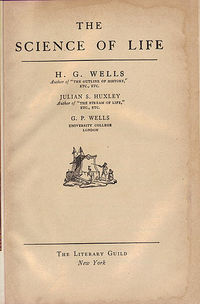#TheScienceOfLife
The Science of Life
The Science of Life is a book written by H. G. Wells, Julian Huxley and G. P. Wells, published in three volumes by The Waverley Publishing Company Ltdnot verified, but probably a subsidiary of Amalgamated Press. in 1929–30, giving a popular account
Read More..
Ratings
Likes
Reviews
Popularity
Ranks
This #hashtag is not ranked yet.

